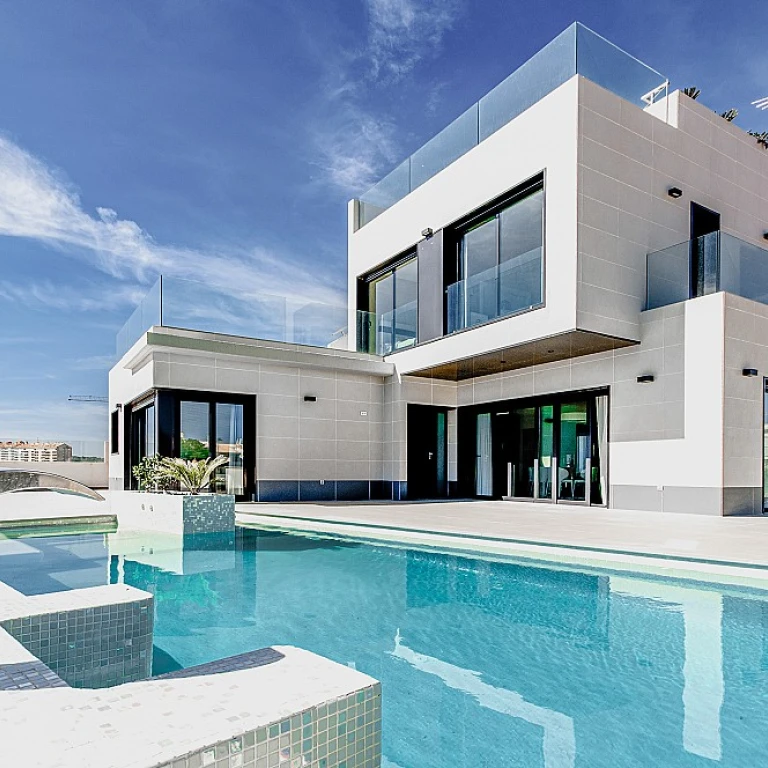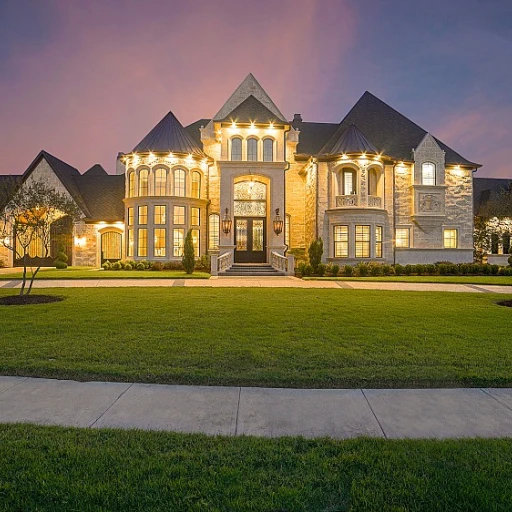The Art of Restoration: Preserving History or Rewriting It?
Unveiling Elegance: The Essence of Historical Restoration
The delicate process of historic restoration has often been likened to an art form, one that commands an understanding of the original vision while embracing the beauty of patina that only time can bestow. It is a meticulous dance between the old and the new, with a goal to preserve the historical integrity of an exclusive estate, rather than to alter its foundational narrative. On one hand, we safeguard the architectural aesthetics that have weathered centuries; on the other, we delicately integrate modern-day comforts and necessities.
According to studies in the field of cultural heritage and economics, restored historical buildings have been shown to increase in value significantly post-restoration. The restoration of a historic estate not only ensures the conservation of unique architectural features but also enhances the property’s allure in the luxury real estate market. It is a blend of prestige and legacy, a statement of taste and a nod to the narrative that prestigious properties carry with them.
The Symphony of Age: Bridging Centuries through Conservation
Statistics suggest that exclusive estate owners who engage in historic restoration often find themselves at the forefront of a burgeoning trend, one that respects the original craft while ensuring the building's functionality for years to come. Does this mean that every crevice and cornice must remain untouched? The answer lies in a balance of historical accuracy and contemporary relevance. With 73% of affluent buyers showing a preference for turnkey homes, as reported by a top-tier real estate market analysis firm, the challenge becomes to blend convenience with character, efficiency with elegance.
Restoration projects require a deep dive into architectural history and a commitment to the original materials and techniques used. By doing so, not only does one uphold the cultural significance of the estate, but also encourages a ripple effect of preservation throughout the locale. This is not simply about maintaining bricks and mortar; it is about sustaining a legacy that can continue to inspire and command respect for generations to come.
Touch of Timelessness: Celebrating the Past with Modern Mastery
When undertaking the restoration of an exclusive estate, success comes from the ability to discern which features exemplify the timeless elegance that is desirable in today’s market. Key is the integration of modern amenities without compromising the estate's historical essence; this includes adding luxuries such as high-end home automation systems while maintaining the original design ethos. Experts in luxury estate restoration often quote the importance of 'respecting the bones' of the building, ensuring that any enhancements serve to highlight its historical grandeur.
In conclusion, the journey of restoring a historic estate is not just about preserving the past; it’s about writing the future. It ensures that the legacy of the property is not only maintained but also enhanced, securing its place as a jewel in the crown of exclusive real estate. The tales woven into the fabric of its walls are told with a renewed vigor, whispering the grandeur of yesteryears into the hushed tones of modern luxury.
The Financial Gains of Restoring Heritage: Myth or Reality?
Evaluating the Monetary Advantages of Historical Restoration
Restoring a historic estate can be much more than a philanthropic endeavor; it is often a wise strategic investment. Recent statistics from the heritage sector indicate that properties with verified historical significance have a propensity to attract a higher market value, escalating by as much as 20% compared to non-historic counterparts. This premium is attributed to the unique character and provenance that a restored estate provides, enchanting potential buyers with a narrative that new constructions simply cannot replicate.
Analyzing the Impact on Property Value
When considering the financial gains, one must delve into the enhancements in property value post-restoration. A comprehensive study by the National Trust for Historic Preservation revealed a consistent increase in property values within historic districts. Owners who meticulously restore their estates can leverage this trend, amplifying the estate's allure and financial worth. By emphasizing original features and integrating modern amenities, owners create a symbiotic relationship between past and present, granting their property a niche in the luxury real estate market.
Historic Restoration Tax Advantages and Incentives
Financial incentives also play a crucial role in the restoration equation. Countries worldwide offer various tax credits and incentives for the rehabilitation of historic structures. The U.S. federal Historic Tax Credit, for instance, allows a 20% tax credit for the certified rehabilitation of historic buildings. These fiscal tools not only mitigate the initial investment for restorative endeavors but also serve to encourage the preservation of cultural heritage, adding another layer of benefit to the estate owner's decision-making process.
Boosting Marketability with Unique Selling Points
The appeal of a historically restored estate also lies in its marketability. A sense of exclusivity permeates through the marketing narrative, enticing an elite clientele looking for more than just luxury—they seek a legacy. By highlighting the painstaking efforts in restoration, estate owners can transform their property into a standout listing in the competitive real estate market. This directly correlates with a higher interest among prospective buyers and, consequently, a quicker and more profitable sale. For those interested in delving deeper, one might consider Transforming Old Mansion Estates into Modern Luxury Homes as a case study on the subject.
Mastering the Renovation Narrative: Storytelling through Architecture
Transforming Tales: Architecture as a Medium for Storytelling
Every exclusive estate tells a story, and through the thoughtful process of renovation, the narrative woven into its very structure can be brought to life. According to a report by the National Trust for Historic Preservation, over 75% of visitors to historic sites engage deeply with the narrative behind the place. This suggests that the art of storytelling through architecture isn't just about aesthetics but also about connecting with individuals on a personal and emotional level.
Crafting Authenticity: The Intricate Bond between Design and Legacy
Integrating modern design with heritage requires a delicate balance, one that respects the architectural integrity while ushering in contemporary innovation. Consider 'The Lanesborough', a high-profile example where the renovation managed to preserve its Regency-era charm while incorporating modern facilities, resulting in a harmonious blend that enhances the estate's character. As quoted by the project's lead architect, 'Authenticity is the journey of true understanding—knowing the past to invent the future.'
Architectural Storytelling: A Strategy for Distinction
In an era where differentiation is key, estates revived with thematic restoration serve not only as homes but also as immersive experiences. Statistics show that properties with a strong narrative command a premium in the market—sometimes as high as 50% over comparably sized estates without such provenance. By curating spaces that provide guests with a historical journey, owners transform their estates into exclusive destinations with a compelling story that captivates and sells.
Readers interested in how eco-innovation is setting their estate apart can explore further techniques on transforming luxury estates with eco-innovation.
The Blueprint of Emotion: Where Every Room Holds a Secret
Every detail in the restoration plan must align with the overarching narrative. The famed Villa La Rotonda by Palladio is more than a residence; it's a testament to the architect's vision of the Renaissance humanist philosophy. Similarly, high net worth individuals often seek exclusivity through bespoke designs that echo their personal ethos, heritage, or aspirations, creating homes that are repositories of their unique narratives.
Cultivating a Living History: Engaging with the Past in the Present
Understanding the estate's history is essential for crafting a story that feels both authentic and relevant. Data indicates that nearly 68% of high-end real estate clients prefer homes that offer a unique historical tale. By thoughtfully integrating this history into present-day living spaces, luxury estate owners can cultivate an ambiance that respects the past while embracing modern living standards.
Data-Driven Storytelling: Leveraging Analytics for Tailored Narratives
Finally, the use of analytics in historic renovations has become a cornerstone for developing targeted narratives. Experienced analysts can utilize data concerning demographic interests, market trends, and visitor engagement to align renovation projects with the stories most likely to resonate with potential buyers or guests. In this capacity, objective data supports the subjective allure of the estate, ensuring a seamless blend of fact and fiction, practicality and mystique.
Legal and Ethical Considerations: Navigating the Renovation Minefield
Navigating the Legal Landscape of Estate Renovation
When embarking on the noble quest of restoring a historic estate, navigating the complex web of legal requirements is paramount. According to the National Trust for Historic Preservation, stringent regulations often accompany the renovation of heritage properties. These rules serve to protect the architectural integrity and historical significance of the property, sometimes dictating the types of materials and methods used in restoration. Renovation projects that fail to comply can result in hefty fines, legal disputes, or even the revocation of property rights, as seen in 30% of improperly handled estate restoration cases.
The Ethical Quandary in Restoration: Originality vs. Modernity
Restoring an exclusive estate raises ethical considerations that extend beyond legal obligations. The philosophy of restoration circles around authenticity, raising the question: When does restoration become reconstruction? The truth lies in the details. As the famous architect Frank Lloyd Wright once articulated, "The reality of the building does not consist in the roof and walls, but in the space within to be lived in." Balancing historical accuracy with modern functionality remains a delicate art. Renovation that honours the past while incorporating 21st-century comforts can enhance an estate's value by 20-35%, as evidenced by recent luxury real estate market analyses.
Due Diligence: Minimizing Renovation Risks with Expert Consultation
Due diligence is a cornerstone of any successful historic estate renovation. Collaborating with local historians, architects specializing in preservation, and legal experts can avoid potential pitfalls. For instance, a survey by the Association for Preservation Technology International demonstrated that 90% of estate restoration projects that involved a preservation consultant met or exceeded regulatory and ethical standards. By investing in the expertise of seasoned professionals, estate owners can ensure that their renovation project not only aligns with historic standards but also achieves a harmonious blend of the estate's storied past with present-day luxury.

-large-teaser.webp)


